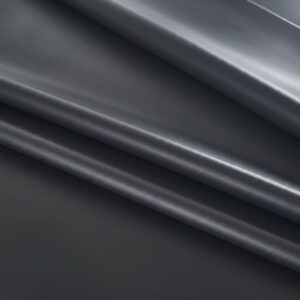Introduction
When embarking on any project, whether it’s in construction, automotive, or electronics, selecting the appropriate rubber material is paramount. In this article, we’ll explore the differences between EPDM and silicone rubber to help you make an informed decision for your project.

Overview of EPDM Rubber
EPDM (Ethylene Propylene Diene Monomer) rubber is a synthetic elastomer known for its excellent weather resistance, ozone resistance, and heat resistance. Its molecular structure includes ethylene, propylene, and diene monomer units, which contribute to its unique properties. EPDM rubber finds applications in various industries, including construction, automotive, and electrical.
Overview of Silicone Rubber
Silicone rubber, on the other hand, is a synthetic elastomer composed of silicon, oxygen, carbon, and hydrogen atoms. It offers exceptional heat resistance, flexibility, and biocompatibility, making it suitable for a wide range of applications, from medical devices to kitchenware.
Key Differences Between EPDM and Silicone Rubber
EPDM and silicone rubber are both popular choices for gaskets, seals, and other applications requiring flexibility and durability. While they share some similarities, there are some key differences to consider when choosing between them:
- Temperature Resistance: Silicone generally has a wider temperature resistance range, tolerating extreme highs and lows better than EPDM.
- Chemical Resistance: EPDM excels at resisting water, acids, and alkalis. Silicone, on the other hand, resists oils and some fuels better.
- Weatherability: EPDM is a champion for outdoor applications. It resists UV rays, ozone, and harsh weather very well. Silicone also performs well outdoors, but not quite to the same extent as EPDM.
- Flexibility: Silicone is typically more flexible than EPDM, making it ideal for applications requiring greater movement or compression.
- Tear Strength: EPDM tends to be stronger and more tear-resistant than silicone.
Here’s a quick table summarizing the key differences:
| Feature | EPDM | Silicone |
|---|---|---|
| Temperature Resistance | Moderate | High |
| Chemical Resistance | Acids, alkalis, water | Oils, some fuels |
| Weatherability | Excellent | Very good |
| Flexibility | Good | Excellent |
| Tear Strength | High | Moderate |
In summary:
Choose EPDM for: Outdoor applications, resistance to water, acids, and alkalis, affordability, and superior tear strength.
Choose silicone for: High and low-temperature extremes, flexibility, oil resistance, and applications requiring a wider range of movement.
Environmental Considerations
- Resistance to Heat and Cold: EPDM rubber performs well in both high and low-temperature environments, while silicone rubber is particularly resistant to extreme heat.
- UV Resistance: EPDM rubber demonstrates excellent UV resistance, making it suitable for outdoor applications exposed to sunlight. Silicone rubber also offers UV resistance but may degrade over prolonged exposure.
- Ozone Resistance: Both EPDM and silicone rubber exhibit good ozone resistance, but EPDM may have a slight edge in this aspect.
Durability and Longevity
- Aging Resistance: EPDM rubber has a proven track record of aging resistance, maintaining its properties over extended periods. Silicone rubber also shows excellent aging resistance but may experience degradation under certain conditions.
- Weathering Resistance: EPDM rubber withstands weathering and environmental exposure well, making it ideal for outdoor applications. Silicone rubber fares similarly but may require additional protection in harsh environments.
- Chemical Resistance: EPDM rubber demonstrates good resistance to chemicals, oils, and solvents, whereas silicone rubber is generally inert and resistant to a wide range of chemicals.
Cost Analysis
- Initial Cost: EPDM rubber typically has a lower initial cost compared to silicone rubber, making it a cost-effective option for many applications.
- Total Cost of Ownership: While silicone rubber may have a higher upfront cost, its longevity and performance characteristics can result in lower maintenance and replacement costs over time, potentially offsetting the initial investment.
- Cost-Benefit Analysis: When evaluating the cost-benefit ratio, consider factors such as project requirements, environmental conditions, and long-term performance expectations to determine the most cost-effective option for your specific application.
Applications in Construction
- Roofing Systems: EPDM rubber is commonly used in roofing systems due to its weather resistance, durability, and ease of installation. Silicone rubber may also be used for roofing applications, especially in areas with high temperatures or exposure to UV radiation.
- Sealing and Gasketing: EPDM rubber seals and gaskets provide reliable protection against leaks and environmental contaminants in construction applications. Silicone rubber offers similar sealing properties and may be preferred for high-temperature or chemical-resistant seals.
- Waterproofing Membranes: Both EPDM and silicone rubber can be used as waterproofing membranes in construction projects, providing a durable barrier against water intrusion and moisture damage.
Applications in Automotive Industry
- Gaskets and Seals: EPDM rubber gaskets and seals are commonly used in automotive applications due to their excellent sealing properties and resistance to automotive fluids. Silicone rubber may also be used for specialized applications requiring high-temperature resistance.
- Hoses and Tubing: EPDM rubber hoses and tubing are widely used in automotive cooling systems, fuel systems, and HVAC systems due to their flexibility, durability, and resistance to heat and chemicals. Silicone rubber hoses are preferred for high-temperature applications such as turbocharger systems and intercoolers.
- Electrical Insulation: Both EPDM and silicone rubber are used as electrical insulation materials in automotive wiring harnesses and electrical connectors, providing protection against moisture, heat, and environmental contaminants.
Applications in Electronics Industry
- Encapsulation: Silicone rubber is commonly used for encapsulating electronic components and circuitry due to its excellent moisture resistance, thermal stability, and dielectric properties.
- Thermal Management: EPDM rubber may be used for thermal management applications in electronic devices, providing insulation and heat dissipation properties. Silicone rubber offers superior heat resistance and may be preferred for high-temperature applications.
- Insulation: Both EPDM and silicone rubber are used as electrical insulation materials in electronic devices, providing protection against electrical shocks and short circuits.
Flexibility and Elasticity
- Compression Set Resistance: EPDM rubber exhibits good compression set resistance, maintaining its shape and sealing properties under pressure. Silicone rubber also offers excellent compression set resistance, making it suitable for dynamic sealing applications.
- Low-Temperature Flexibility: EPDM rubber remains flexible at low temperatures, making it suitable for cold climate applications. Silicone rubber also maintains flexibility at low temperatures but may become stiffer in extreme cold.
- High-Temperature Flexibility: Silicone rubber excels in high-temperature flexibility, retaining its elasticity and sealing properties at elevated temperatures. EPDM rubber may experience degradation at higher temperatures but remains functional within its temperature range.
Adhesion and Bonding Properties
- Adhesive Compatibility: EPDM rubber is compatible with a wide range of adhesives, sealants, and coatings, making it easy to bond to various substrates. Silicone rubber also exhibits good adhesive compatibility but may require specialized adhesives for optimal bonding.
- Surface Preparation Requirements: Proper surface preparation is essential for achieving strong bonds with both EPDM and silicone rubber. Surface cleaning, priming, and roughening may be necessary to ensure adhesion to substrates.
- Bond Strength: EPDM rubber forms strong bonds with substrates when properly bonded, providing reliable sealing and adhesion properties. Silicone rubber bonds well to many substrates and offers excellent bond strength in suitable applications.
Manufacturing Processes
- Extrusion: EPDM rubber can be extruded into various shapes, profiles, and sizes using extrusion processes, making it suitable for custom sealing and gasketing applications. Silicone rubber is also compatible with extrusion processes and can be formed into complex shapes with tight tolerances.
- Molding: Both EPDM and silicone rubber can be molded into precise shapes and geometries using compression molding, injection molding, or transfer molding techniques. Molding processes allow for mass production of rubber components with consistent quality and dimensional accuracy.
- Vulcanization: Vulcanization is a key manufacturing process for both EPDM and silicone rubber, imparting cross-linking and curing properties to the rubber material. Vulcanization enhances the mechanical properties, durability, and heat resistance of rubber products.
Customization Options
- Color: EPDM rubber and silicone rubber can be customized in various colors to meet aesthetic requirements or color-coding standards. Custom-colored rubber compounds are achieved by incorporating pigments or dyes during the manufacturing process.
- Hardness: EPDM rubber and silicone rubber are available in a range of durometer hardness ratings, from soft and flexible to hard and rigid. Hardness is measured on the Shore durometer scale and can be tailored to specific application requirements.
- Surface Finish: Both EPDM and silicone rubber can be produced with different surface finishes, including smooth, textured, or embossed finishes. Surface finishes may affect friction, adhesion, and aesthetic appearance of rubber components.
Regulatory Compliance
- FDA Approval (if applicable): EPDM rubber and silicone rubber may be used in food contact applications, such as gaskets, seals, and tubing, requiring compliance with FDA regulations for food safety and hygiene.
- RoHS Compliance: EPDM rubber and silicone rubber may be subject to RoHS (Restriction of Hazardous Substances) regulations, limiting the use of certain hazardous substances in electrical and electronic equipment.
- REACH Compliance: EPDM rubber and silicone rubber may also be subject to REACH (Registration, Evaluation, Authorization, and Restriction of Chemicals) regulations, ensuring the safe use and handling of chemicals in manufacturing processes.
Case Studies
- Real-Life Examples of EPDM Applications: Explore real-life applications of EPDM rubber in roofing systems, automotive gaskets, and industrial seals, highlighting the material’s durability, weather resistance, and cost-effectiveness.
- Real-Life Examples of Silicone Applications: Discover how silicone rubber is used in medical devices, kitchenware, and electronics, showcasing its biocompatibility, heat resistance, and versatility in diverse applications.
- Comparative Case Studies: Compare and contrast the performance, cost, and suitability of EPDM and silicone rubber in specific applications, providing insights into material selection and decision-making processes.
Considerations for Specific Projects
- Factors Influencing Material Selection: Consider project requirements, environmental conditions, regulatory compliance, and budget constraints when choosing between EPDM and silicone rubber for specific applications.
- Consultation with Industry Experts: Seek guidance from rubber material suppliers, engineers, and industry experts to assess the feasibility and suitability of EPDM and silicone rubber for your project requirements.
Maintenance Requirements
- Cleaning Procedures: EPDM and silicone rubber components can be cleaned using mild soap and water, followed by thorough rinsing and drying to remove dirt, debris, and contaminants.
- Inspection Protocols: Regular inspections of EPDM and silicone rubber components are essential to detect signs of wear, damage, or degradation, allowing for timely repairs or replacements to prevent costly failures.
- Repair Techniques: Repair damaged EPDM and silicone rubber components using compatible adhesives, sealants, or patching materials, following manufacturer recommendations and industry best practices.
Future Trends and Innovations
- Research and Development Efforts: Explore ongoing research and development efforts in rubber materials science, including advances in formulation, processing, and performance enhancement for EPDM and silicone rubber.
- Emerging Technologies: Discover emerging technologies and innovations in rubber material applications, such as additive manufacturing, smart materials, and nanotechnology, shaping the future of EPDM and silicone rubber products.
- Market Trends: Stay informed about market trends and developments in rubber material industries, including shifts in demand, new applications, and emerging markets for EPDM and silicone rubber products.
Conclusion
In conclusion, choosing the right rubber material for your project requires careful consideration of factors such as chemical composition, physical properties, performance characteristics, and environmental considerations. Whether you opt for EPDM or silicone rubber, both materials offer unique advantages and applications across various industries. By understanding the differences between EPDM and silicone rubber and evaluating their suitability for specific project requirements, you can make an informed decision and achieve optimal performance, durability, and cost-effectiveness in your applications.






